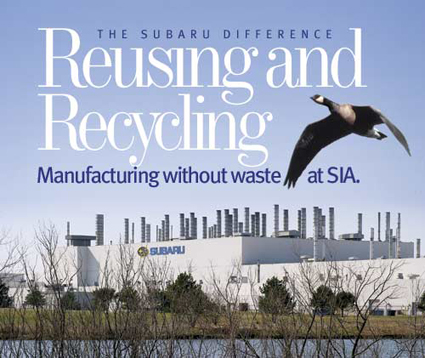Source: Safe Harbor Foods
Isn’t it about time that fish was actually put to the test?
Mercury is one of the most insidious elements that can be ingested. Known for its negative health effects on the seafood consuming population, in some cases it can cause irreversible damage. But while many people are aware that mercury exists in certain fish, there is no universal certification that tests how much of the element is present in commonly eaten seafood.
One part (of mercury) per million, or 1 ppm, is the nationally accepted “safe” measure, stipulated by the U.S. Food & Drug Association (FDA). Anything above this level, exposes the consumer to the negative effects of mercury poisoning. Now, compare this to the accepted safe measures of other international jurisdictions: Europe considers anything above 0.5 ppm unsafe, Japan’s measure is 0.3 to 0.4 ppm (based upon the particular fish), and Canada’s measure is 0.5 ppm for most species. It begs the question as to how seriously the FDA takes the interest of the American consumer’s health.
It is near impossible to tell which products contain mercury, just by looking at the line up of seafood in the supermarket. The average consumer assumes that high-end supermarkets provide better quality but often, it’s just the opposite. While smaller fish hold less mercury, larger fish make for better presentation at retail. A single fish can be cut into four steaks that are considerably more attractive than pieces cut from smaller fish. As in any retail environment, the better-looking product has a higher sale potential. So, chances are that the better looking the fish, the higher its prospect of having unsafe levels of mercury!
But it’s not just about size. Malcolm Wittenberg, the owner of Safe Harbor, a San Francisco based mercury testing and certification company, says that it’s more about how long the fish lives and also how predatory it is. Tuna and swordfish, for example, live about 60 years, and depend upon a vast array of smaller species for survival. Predatory fish such as shark, halibut, tuna, and swordfish tend to be the ones with high mercury levels.
There is also a difference between farmed and wild caught fish. Generally speaking, farmed fish are safer. However, farmed Atlantic salmon has levels of about 1.2 ppm on average. This can be attributed to the heavy concentrations of coal in the Midwest and on the East coast. Westerly winds (winds that move in a west to east direction) carry toxic mercury particles which they eventually dump into the Atlantic Ocean with rainfall. Hence, the growing incidence of mercury in these waters.
Which government body provides the last word on fish?
According to Wittenberg, no U.S. government agency tests for mercury:
“What the FDA checks, is less than half of 1% of predatory fish, like swordfish. They check fish for 1 ppm, about five times in a row each year. But importers know how to beat the system by loading up their test batches with small fish that are sure to pass,” says Wittenberg.
The FDA is only responsible for commercial fish. Each year, seafood importers are obliged to have five batches undergo FDA testing. Importers will generally ensure that their test batches comprise smaller fish (as smaller fish hold less mercury). Once the test batches have been approved however, they revert to bringing in larger, mercury contaminated fish. As mentioned previously, large fish retail more effectively in high-end stores and restaurants.
Why is the FDA so lenient?
“Well simply because special interest groups like the National Fisheries Institute, put a good deal of pressure on the government. They want the fishing industry to prosper,” says Wittenberg.
The EPA, which is responsible for non-commerical fish takes a slightly different view. Knowing that the “safe level” defined by the FDA is 1 ppm, the EPA can stop sale if in fact it discovers a retailer carrying seafood that has unsafe levels.
However, the so-called safe limits do not bear little relation to how much mercury consumption is required to negatively impact the health of an individual, a measure that is entirely subjective, based upon the individual’s body weight as compared to the amount of mercury consumed. So, for example, a can of tuna, which has 0.335 ppm, will have less of an effect on a 300lb man than on a 30 lb child.
The “Got Mercury” website – www.gotmercury.org, has a user-friendly mercury calculator that allows consumers to make healthier seafood choices by entering their weight, the seafood type, and the amount of seafood consumed during a week. These calculations are based on EPA and FDA data.
Safe Harbor has recently tested fish in Albertsons, which proved to be 1.6 ppm, well over the so-called FDA safe limit. The company now tests fish for mercury in real time, at processing facilities in the Philippines, Chile, and Ecuador. While the average test takes about a week, their machinery can provide answers in less than 1 minute. Seafood product that is stamped with the Safe Harbor seal can be found in specific supermarkets such as Bristol Farms in Los Angeles and Haggen Markets in Seattle. As more seafood distributors sign up with them, it is likely that the Safe Harbor seal will be seen on products in more supermarkets across the country.
How can you tell if you are experiencing mercury poisoning?
Symptoms of mercury poisoning include a metallic taste in the mouth, hearing loss, headaches, motor loss, lack of, focus, and much more. In some cases, it can cause irreparable damage to the heart and the nervous system. The good news is that for the average person, symptoms disappear after the consumption of mercury-laden Seafood has been curbed.
However, pregnant women, nursing babies and young children don’t have it so easy. Exposure to mercury at an early age can result in a permanently low IQ and lack of motor ability. Pregnant mothers are especially susceptible: one out of eight pregnant women across the nation, and one out of five pregnant women in the U.S. Northeast, are reported to have elevated mercury levels. This goes back to the presence of coalfields in that part of the country.
Mercury in fish is an increasing problem
It is likely that incidences of mercury will rise in direct proportion to industrialization. 30% of the U.S.’s wetlands are polluted. Industrial waste in Asia, specifically in countries like China are dumping increasing amounts of mercury into the oceans which, thanks to the Pacific jet streams, are slowly being carried towards the waters off Seattle. According to Dr. Jane Hightower, an Internal Medicine Physician at San Francisco’s California Pacific Medical Center, California is bearing the brunt of China’s toxic plume.
Here are links to a couple of videos that provide more detail about Safe Harbor and the dangerous mercury levels in commonly eaten fish.
mercury-in-fish-cbs-eye-witness-news-kpix-part-1
mercury-in-fish-solution-safe-harbor-king-52
Watch this interesting video presentation about the politics and health effects of mercury poisoning, by Dr. Jane Hightower, at San Francisco’s Commonwealth Club. She is also the author of “Diagnosis: Mercury: Money, Politics, and Poison.”
[fora id=8415]







EarthShare and The Ad Council flood talk radio’s airwaves about the dangers of mercury in fish. The same topic is all over the green blogosphere. Yet, ironically, all the groups who express such concern over the mercury levels in fish supported the bill that bans incandescent light bulbs in 2012. They did this knowing that the only viable alternative is a mercury based flourescent bulb (i.e. CFL). If mercury is as dangerous as the greens say, please explain how the greens derived the following equations:
FISH + MERCURY = DANGEROUS
LIGHT BULBS + MERCURY = SAFE
It would seem that breaking a CFL and inhaling the mercury vapors would be as dangerous as eating a fish.
EarthShare and The Ad Council flood talk radio’s airwaves about the dangers of mercury in fish. The same topic is all over the green blogosphere. Yet, ironically, all the groups who express such concern over the mercury levels in fish supported the bill that bans incandescent light bulbs in 2012. They did this knowing that the only viable alternative is a mercury based flourescent bulb (i.e. CFL). If mercury is as dangerous as the greens say, please explain how the greens derived the following equations:
FISH + MERCURY = DANGEROUS
LIGHT BULBS + MERCURY = SAFE
It would seem that breaking a CFL and inhaling the mercury vapors would be as dangerous as eating a fish.
Bobby,
You are absolutely right! And this is great material for a whole other story (which if you would like to contribute to, please do let us know). It appears that the ‘greens’ are somewhat confused about their research if not their overall agenda!
Reenita
Bobby,
You are absolutely right! And this is great material for a whole other story (which if you would like to contribute to, please do let us know). It appears that the ‘greens’ are somewhat confused about their research if not their overall agenda!
Reenita
Reenita,
The “agenda” is always about “power” and “control”. And there can be little confusion about that. The greens want to wrestle power from the individuals, the industries, and the agencies that they feel have too much power. They have learned that to gain power they have to control a population’s belief system. They carefully select their targets, then conceive and spread doomsday stories to sway public opinion in their direction. Their alliance with the teacher’s unions and the secular educational establishment allows them access to developing minds from toddlers through college grads. Their alliance with a willing mainstream media spreads their message to all corners of the globe. Their affiliation with certain political groups provides them opportunities to gain control through legislation. Those who disagree with their message are labeled “deniers” to somehow equate their disagreements to the skewed beliefs of Holocaust deniers and exclude them from the table. This undeclared war has little to do with clean water and clean air, much less mercury laden fish, which is the topic at hand to which I will now return.
Is acute mercury poisoning a bad thing? Definitely. Do modern testing methods allow humans to detect trace amounts of mercury better than in years past? Yes. Are fish the only source by which humans can be exposed to mercury? No, CFL’s and the preservative thimerosal are potential sources for daily exposure. Are coal fired power plants the only source for mercury in fish? Not even maybe. It is common knowledge that oil and natural gas constantly seep through the ocean floor at its deeper points, and both sources inject mercury naturally into the waters. Will winning this two-front war on coal and commercial fishing free mankind from the potential of being exposed to mercury (a naturally occurring element)? Only a fool would believe it possible.
I will concede that more research is necessary. However, to accept the results of research from “scientists” who manipulate the data to conform to the agendas of those who fund them is pointless. Sadly, even science has become politicized and proselytized.
Reenita,
The “agenda” is always about “power” and “control”. And there can be little confusion about that. The greens want to wrestle power from the individuals, the industries, and the agencies that they feel have too much power. They have learned that to gain power they have to control a population’s belief system. They carefully select their targets, then conceive and spread doomsday stories to sway public opinion in their direction. Their alliance with the teacher’s unions and the secular educational establishment allows them access to developing minds from toddlers through college grads. Their alliance with a willing mainstream media spreads their message to all corners of the globe. Their affiliation with certain political groups provides them opportunities to gain control through legislation. Those who disagree with their message are labeled “deniers” to somehow equate their disagreements to the skewed beliefs of Holocaust deniers and exclude them from the table. This undeclared war has little to do with clean water and clean air, much less mercury laden fish, which is the topic at hand to which I will now return.
Is acute mercury poisoning a bad thing? Definitely. Do modern testing methods allow humans to detect trace amounts of mercury better than in years past? Yes. Are fish the only source by which humans can be exposed to mercury? No, CFL’s and the preservative thimerosal are potential sources for daily exposure. Are coal fired power plants the only source for mercury in fish? Not even maybe. It is common knowledge that oil and natural gas constantly seep through the ocean floor at its deeper points, and both sources inject mercury naturally into the waters. Will winning this two-front war on coal and commercial fishing free mankind from the potential of being exposed to mercury (a naturally occurring element)? Only a fool would believe it possible.
I will concede that more research is necessary. However, to accept the results of research from “scientists” who manipulate the data to conform to the agendas of those who fund them is pointless. Sadly, even science has become politicized and proselytized.
This is a very serious topic, one that poses significant health risks if we don’t address it on a global basis. To allow our waterways and oceans to be compromised by toxic chemicals such as mercury simply because it’s more profitable demonstrates a lack of respect for humanity itself.
This is a very serious topic, one that poses significant health risks if we don’t address it on a global basis. To allow our waterways and oceans to be compromised by toxic chemicals such as mercury simply because it’s more profitable demonstrates a lack of respect for humanity itself.
You will discover obviously quite a lot of details just like that to take into mind. That´s a awesome point to bring up. I provide you with the thoughts above as general inspiration but clearly there are questions just like the one you bring up where the most important point will certainly be working in honest very good faith. I don´t know if greatest practices have emerged around things like that, but I am certain that your job is clearly identified as a fair game.
You will discover obviously quite a lot of details just like that to take into mind. That´s a awesome point to bring up. I provide you with the thoughts above as general inspiration but clearly there are questions just like the one you bring up where the most important point will certainly be working in honest very good faith. I don´t know if greatest practices have emerged around things like that, but I am certain that your job is clearly identified as a fair game.